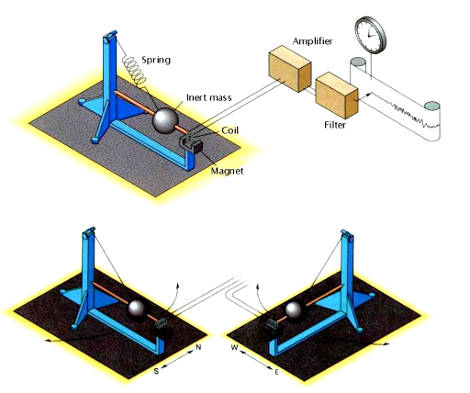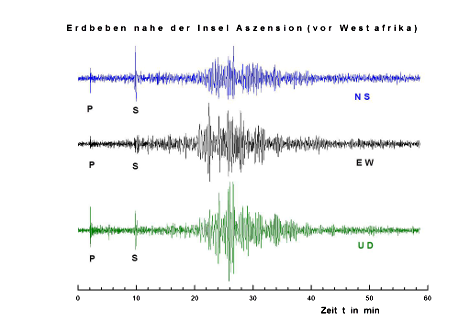6. On the evaluation of a seismogram
As referred to in chap. 2, the determination of the arrival-times (starting time of the first swing) both of the primary- and secondary-wave is essential for the evaluation of the source parameters. Now we want to present the individual steps of a simple analysis of a seismogram as we do it in our seismic-team.
We evaluate the seismogram recorded from the Ascension-earthquake (island off Western Africa) on 18. 02. 1996
- Calculation of the distance between the origin of the earthquake and our station: the epicentre-distance.
- Determination of the time at which the earthquake broke out : the origin time
- Fixing the strength of an earthquake : the (surface-) magnitude (position on the Richter-scale)
- Fixing of the geographical coordinates (latitude and longitude) of the epicentre : the "localisation" of the earthquake
Before we start discussing the routine procedure of evaluating a seismogram let us take a general look at the recording units of a seismographic station.
A complete seismographic station observes the waves of an earthquake in all the three spatial dimensions. This is usually done by two horizontal seismographs, one of which swings from north to south, while the other one swings from east to west. The third dimension is caught by a vertical seismograph, also called up-down or z-seismograph. - A complete seismogram of an earthquake therefore always consists of three components: a North-South-, an East-West- and an Up-Down-Seismogram.

